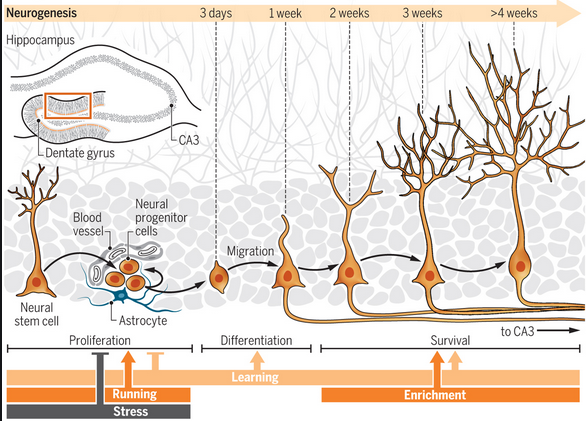Tuesday, 28 September 2021
Two pioneers in research on neurogenesis and vision
 Today I just want to draw your attention to two researchers who are senior citizens but still active and still inspiring: Fred Gage and Deric Bownds.
Today I just want to draw your attention to two researchers who are senior citizens but still active and still inspiring: Fred Gage and Deric Bownds.
Fred Gage recently gave an interview on his scientific career, in which he told how he became a pioneer in research on neurogenesis—the development of new neurons in the brains of adult mammals. It’s always interesting to learn about the scientific career of someone who disproved an idea that was previously dogma. In Gage’s case, it was the idea that had emerged during the last decades of the 20th century that when humans are born, their brains contain as many neurons as they will ever have and will only continue to lose them as their lives go on.
Although Gage disproved this bit of dogma, controversy remains as to which specific parts of the human brain neurogenesis can occur in, and up to what age. But one thing is certain: the two factors that Gage identified as greatly favouring neurogenesis in the brains of rodents — exercise and a rich, stimulating environment — are still two of the most beneficial things for the brain as a whole.
* * *
Regarding Deric Bownds, I just want to mark the 15th anniversary of his blog, Deric’s MindBlog. Now retired, Bownds did research on the molecular mechanisms of vision, in particular on the photoreceptor cells in the retina that convert light energy into neural activity. Every day in his blog, he briefly summarizes a recent study in cognitive neuroscience and places it in the context of current debates in this vast field of research. His posts are so timely that I always provide links to his five most recent ones in the left-hand margin of the blog you’re reading now. In some of his posts, Bownds just summarizes scientific articles that have caught his attention, while in others he takes a deeper dive, but in any case, he remains a steady source of inspiration for me and hence for this blog.
From the Simple to the Complex | Comments Closed







